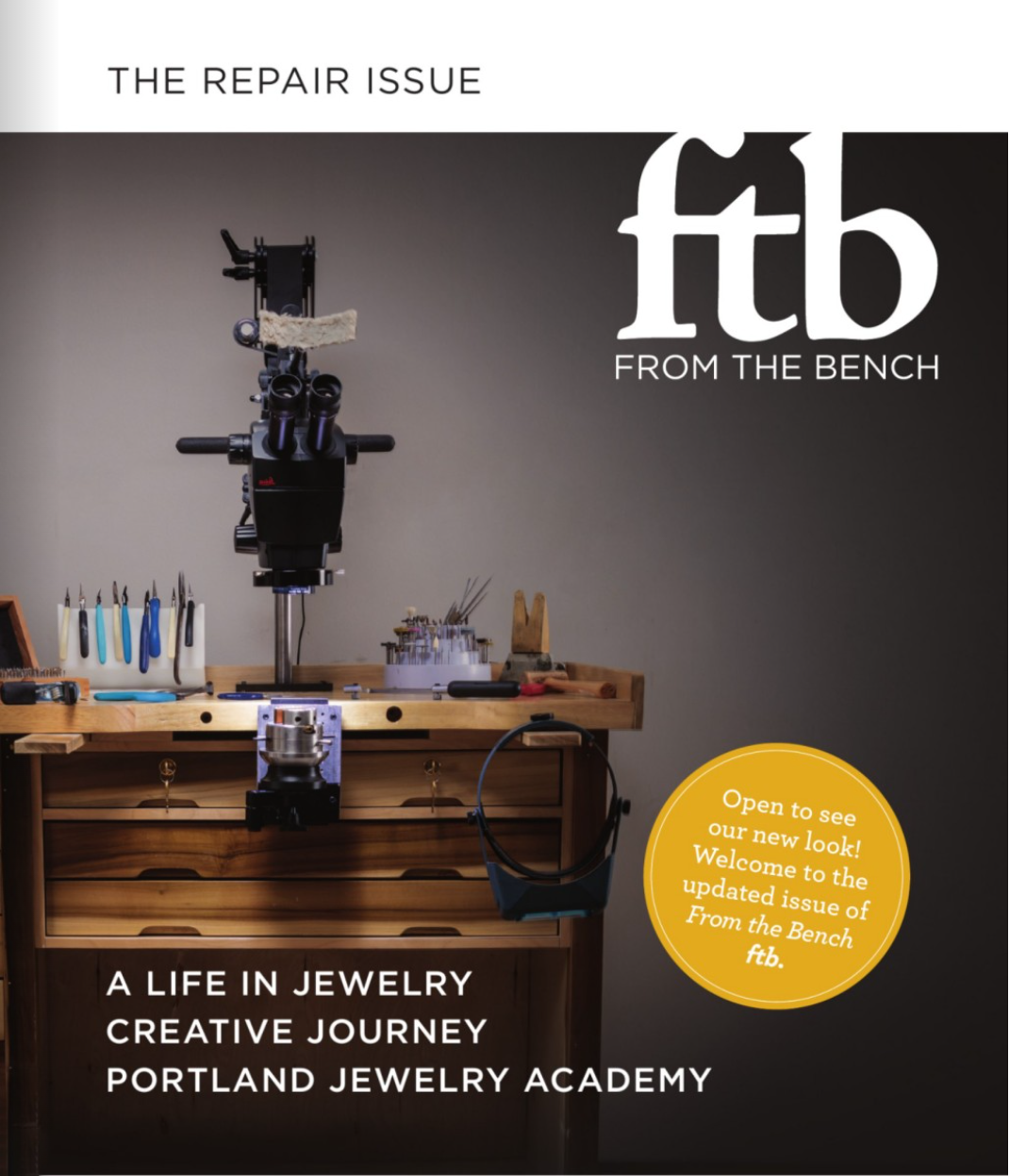
Jewelry
from the bench | january 2018
Written while employed at Stuller.
Excerpts -
A Life in Jewelry David Geller
How often is it that when things look darkest, someone shines a light? David was in desperate need of a good accountant. He had used several over the years, but none of them understood the jewelry business. David's lawyer introduced him to an accountant who had left accounting to open his own watch repair business and later returned to accounting. He understood the repair business and accounting and set about explaining to David how he could be profitable.
He got his jewelers time clocks to find out exactly how long it took to complete each job they did. And he used this amount of time multiplied by what he paid them, adding in an additional 7.5% to cover various taxes paid per employee. He multiplied that by three and arrived at the repair price (He covered this in his article.).
Out of David's apparent nightmare, two important facts emerged, First, customers were much less price-sensitive about repairs than about making an initial purchase. And second, he didn't have to declare bankruptcy. He returned his business to profitability and discovered a new passion: sharing his knowledge so other jewelers could enjoy greater profitability. Over a two and a half year period, he devoted 30 hours a week to write the first edition of Geller's Blue Book to Jewelry Repair & Design.
Creative Journey Theresa Pytell
"I was lucky. How many people find their life's passion in junior high? I followed my passion through high school and into college as learned my Bachelor of Arts Education. Most of my jewelry and metal-working skills are self-taught and I learned sitting down with a few bench jeweler friends along the way. I took a lot of sculpture classes in college also.
She paid for college by working as a bench jeweler in a retail store, After college, instead of teaching art, Theresa stayed on full-time at the jewelry store for several years. Then she grew restless, wanting to concentrate on her own designs. She bought an old Victorian house in downtown Denver, She set up shop on a back porch add-on, embarking on a full-fledged career as an artisan and a wholesaler.
Not one to think small, Theresa went to New York and started wholesaling her jewelry to Saks Fifth Avenue and Henri Bendel, She would fly in, do a trunk show to sell a lot of product, leave fresh product in their cases, and move on to her next destination. Over the next few years, she had her designs in 29 galleries across the country.
Portland Jewelry Academy Jason Chandler
He offers two four-month courses and an intense one-week course on working with platinum. 'I call my basic course Get a Job, and I make sure they have comprehensive training in the basics of metals, fabrication, finishing, and stone setting. I want students to understand why the metals and tools behave the way they do, the right way to perform each task, and why it's the right way."
Jason is an expert in repair as Portland Jewelry Artisans testifies, and his students are prepared to handle bread and butter repairs.
Jason feels a strong commitment to pass on his skills. "Hand fabrication has come down to us through the centuries, and I feel responsible for making sure those skills are alive and well. That's the purpose of Portland Jewelry Academy."
Though he prefers hand fabrication, he has his eye on digital design and stresses its importance once students have learned the traditional methods. "We have a CAD designer at Portland Jewelry Artisans, and I appreciate the power of these capabilities. I tell students that you adapt or get left behind."

